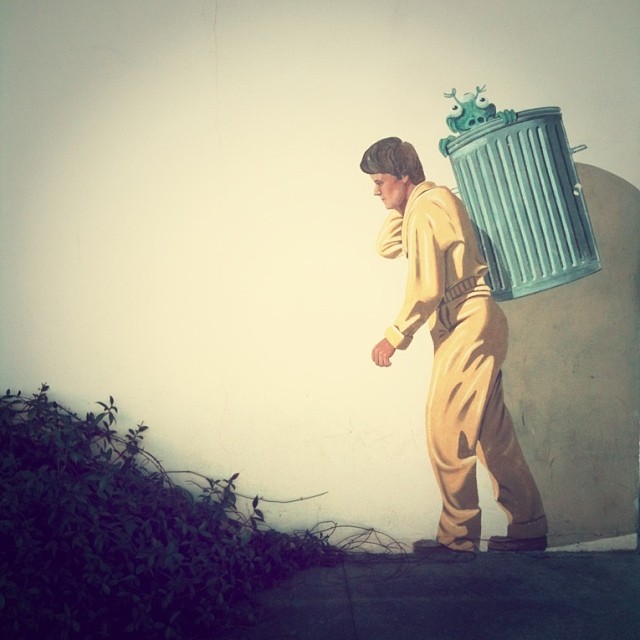
Downtown Palo Alto, California is home to a delightful series of street paintings that I recently discovered. Pictured above is the first one I noticed – a man carrying a garbage can with an alien inside. It’s located on an unassuming wall near a street corner. After observing similar paintings around town, I asked a few people about the story behind them. As it happened, the people I asked didn’t know anything more than I did.
The next step in finding more information was obvious: I should Google the paintings. But I held off. I even stopped asking people about them. Why? I realized that part of the fun of the paintings was the surprise and delight that coincides with unexpected discovery. The paintings provide a beautiful and whimsical addition to the ordinary. Not knowing where they came from or where I might see another added to the sense of fun.
As it turns out, the artist who painted the murals, Greg Brown, felt the same way:
I call it the Palo Alto Pedestrian Series because it’s actually geared toward people being on foot, walking around, and discovering these things. People would ask me – they’d say, “I’m coming into town and want to take some friends around. Can you tell me where all these things are, and we’ll drive them around? And I said, “No, don’t do that. That’s not the way to see them. Just go downtown and see how many you stumble upon.” 1
It is interesting to know the way I chose to view the paintings aligned with the artist’s original intentions. And it brings home a good point. Good art can be for no other reason than to have fun and put a smile on someone’s face – especially when it’s unexpected.
